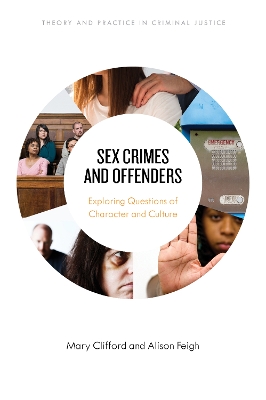Theory and Practice in Criminal Justice
1 total work
For decades, and in some cases centuries, individuals, families, and friends of victims sought out ways to help heal the hurts caused by sexual abuse and implement some way to protect against future harms. The recent very public conversations about victims standing up to perpetrators has expanded the reach and public platform of sexual violence prevention efforts in critical ways. What might appear a relatively simple task on the surface, to define “healthy” and “harmful” sexual practices, inevitably raises even more questions. When the questions and answers are framed and defined through historical, cultural, social, and individual lenses, solutions may seldom be simple.
Structured in five parts, Sex Crimes and Offenders: Exploring Questions of Character and Culture uses healthy sexuality as a back drop for exploring the complicated issue of identifying and punishing sex crimes, defining the parameters of sexualized violence, and sexual violence prevention. The goal is to prevent harm, address hurts, hold perpetrators accountable, and eventually eliminate – to the degree possible—all future harms. The information presented explores individual treatment efforts, as well as the social and political responses designed to hold perpetrators accountable and help support victims. Essential resources made visible throughout this text are provided to help inform young people, families, faith communities and future practitioners, to raise important reflective questions, and to serve as a resource for anyone of any age who has suffered harm, or perpetrated harm, and is in need of support and healing. Finally, the book concludes by shining a light on the efforts each of us can take to identify, reduce, and work toward eliminating sexual violence and harms.
Structured in five parts, Sex Crimes and Offenders: Exploring Questions of Character and Culture uses healthy sexuality as a back drop for exploring the complicated issue of identifying and punishing sex crimes, defining the parameters of sexualized violence, and sexual violence prevention. The goal is to prevent harm, address hurts, hold perpetrators accountable, and eventually eliminate – to the degree possible—all future harms. The information presented explores individual treatment efforts, as well as the social and political responses designed to hold perpetrators accountable and help support victims. Essential resources made visible throughout this text are provided to help inform young people, families, faith communities and future practitioners, to raise important reflective questions, and to serve as a resource for anyone of any age who has suffered harm, or perpetrated harm, and is in need of support and healing. Finally, the book concludes by shining a light on the efforts each of us can take to identify, reduce, and work toward eliminating sexual violence and harms.
